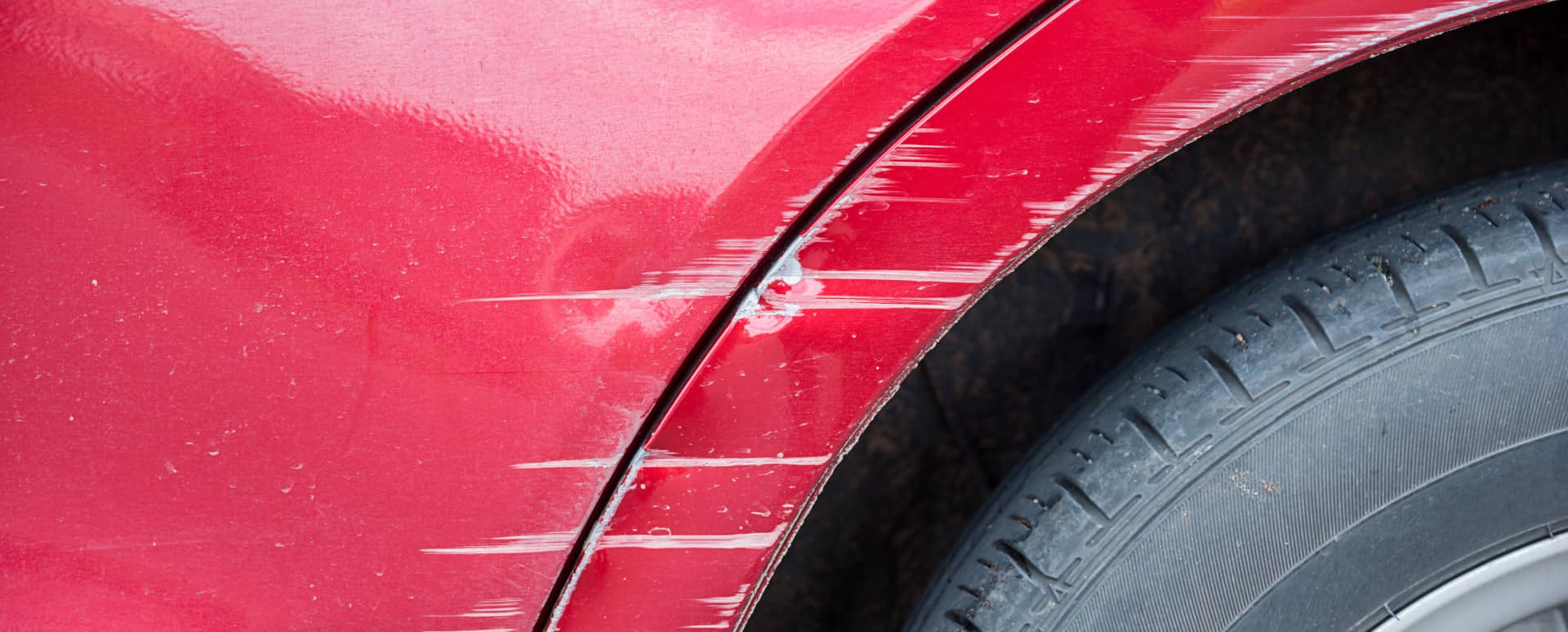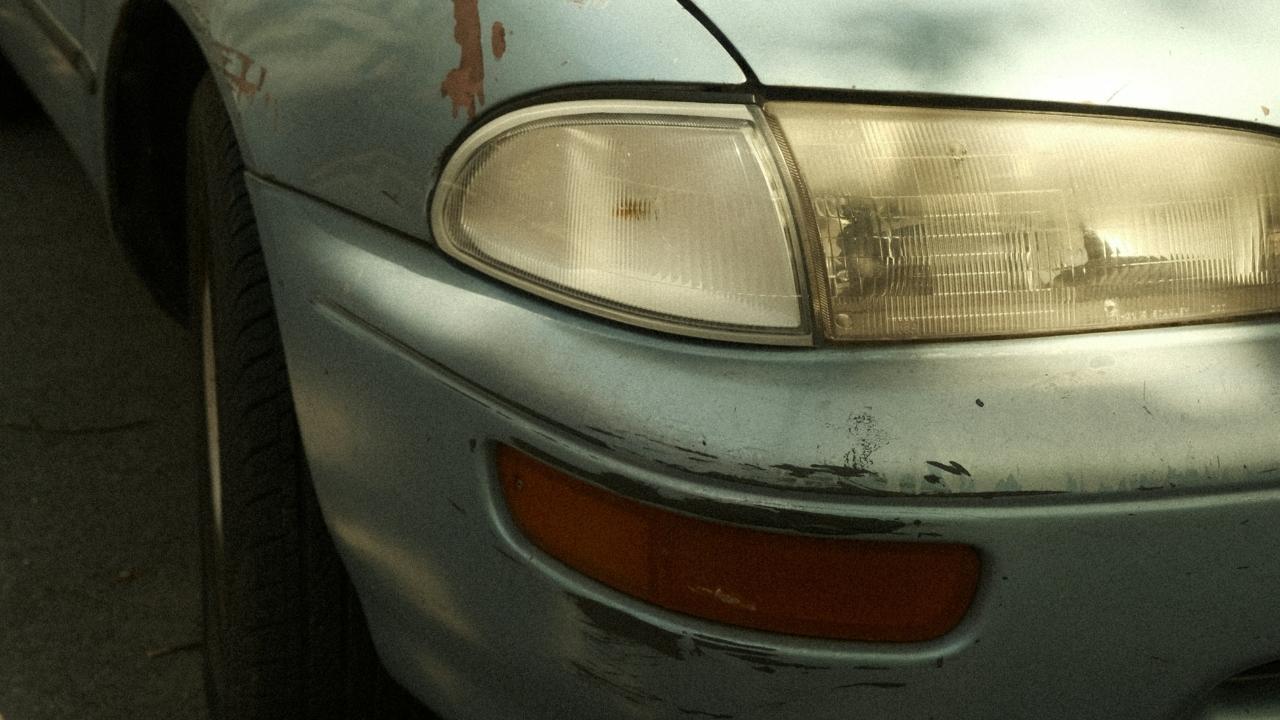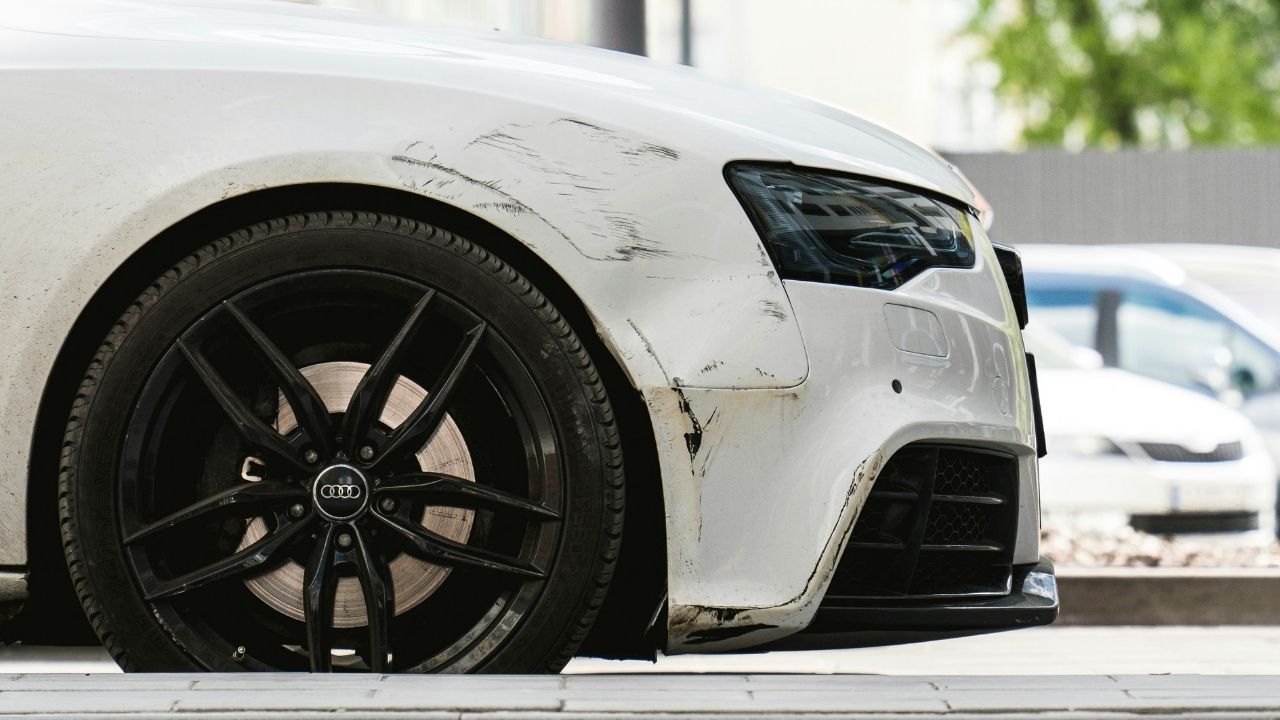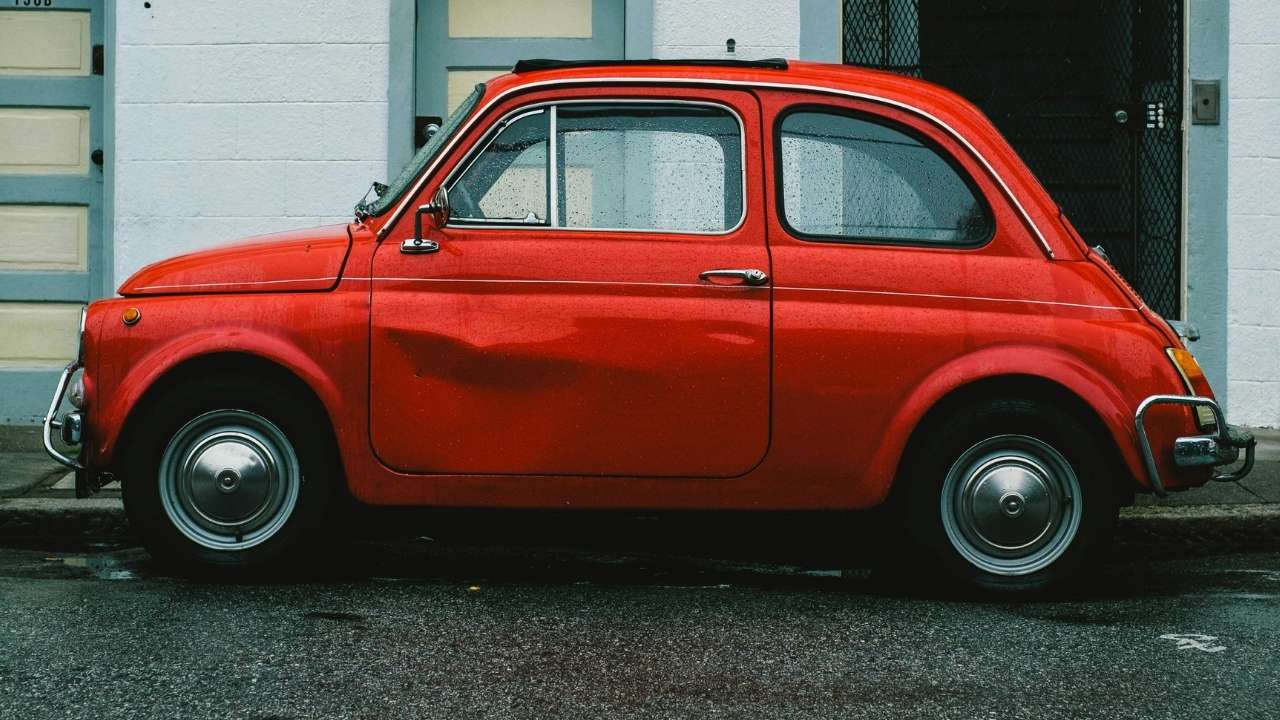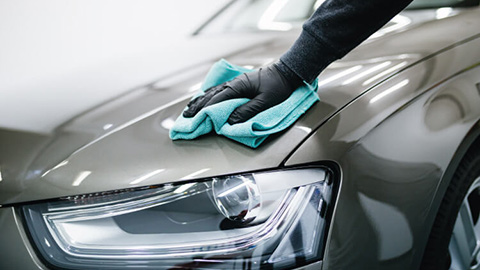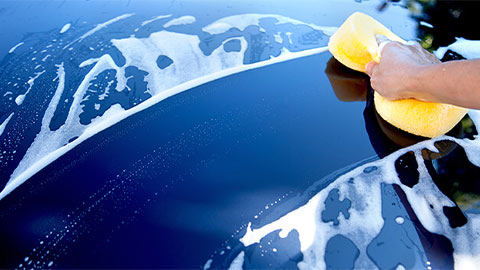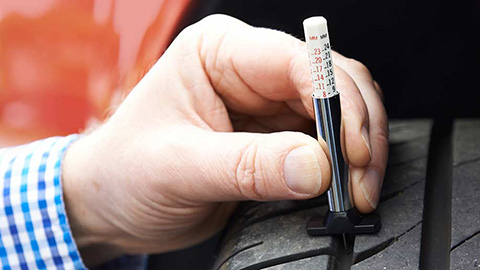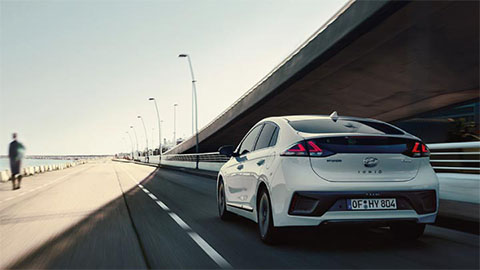Whether you’re driving your car in the city or the countryside, it’s practically unavoidable to end up with a scratch, dent, or paint chips on your vehicle at some point. Learning how to handle minor issues like these can help you save the time and money you’d otherwise spend leaving your car at the garage.
To support your learning journey, we’ve put together this guide to walk you through the tools and steps you’ll need to fix small paint damage on your vehicle.
- Can I fix car scratches myself?
- How do I repair a deeper scratch?
- Will my insurance pay for scratches on my car?
- How to fix a small dent in a car?
- How to fix car chips
- Frequently Asked Questions
Can I fix car scratches myself?
Scuffs and scratches frequently appear on bumpers or the wings of a car. Depending on how deep the scratch is, it is possible to fix it at home. The first step is to wash the scuff and the surrounding paintwork. Before starting any work, make sure you're wearing proper protective gear, including single-use rubber gloves, safety glasses, and a face mask.
Next, proceed to the first step: use a proprietary rubbing compound on the scuff. Follow this with a polishing compound. The final step is to apply a coat of car wax, and it's ready.
A car accessory shop is the best place to buy rubbing and polishing compounds. If you're unsure which products are best for your particular paint finish, seek advice from a professional. If the scuff is on a plastic bumper, a proprietary bumper cleaner may be all that's needed.
Bear in mind that scuffs can sometimes require a fair bit of elbow grease to remove. However, take care not to damage the surrounding paintwork. Also, never use household cleaners, as they may scratch the paint.
How do I repair a deeper scratch?
If the scratch you want to remove is deeper than the top coat and has reached the metal, it's advisable to take your vehicle to a professional. This type of scratch requires more attention and labour that requires a specialist.
You can choose to have your vehicle repaired at a location that offers SMART repair, such as Evans Halshaw. SMART stands for "Small and Medium Area Repair Technology", which is a process focused on restoring small areas of your vehicle to make it look as good as new.
Will my insurance pay for scratches on my car?
This will depend on your insurance policy and what type of damages are included in the coverage. Some insurance providers have a separate plan to cover smaller damages, such as scratches, but the excess would still cost more than trying to repair it yourself or taking it to a third-party technician.
At Evans Halshaw, we provide a minor damage repair cover that includes repairing small dents and scratches that happen on everyday driving. The repairs are performed by manufacturer-trained technicians, who will help you keep the vehicle in pristine condition.
How to fix a small dent in a car?
Dents in your car's bodywork can be frustrating and expensive to repair. While some may require professional tools like electromagnets or the skills of a body repair specialist, there are a few do-it-yourself methods you can try at home. Here are four common techniques to consider:
Use a Dent Puller
You can buy a dent puller kit that includes special heat glue. Apply the glue to the centre of the dent and attach the pulling tool as directed. Once the glue sets, turn the screw handle of the puller to draw the metal outward gently. If successful, the dent will pop back into shape without damaging the paint. Be sure to follow the product instructions carefully.
Heat and Cool
This method uses rapid temperature change to encourage the dent to expand and contract, which can help it snap back into place. First, heat the dented area with a hair dryer for a few minutes. Then, apply CO₂ (dry ice or a compressed air can turned upside down) to cool the area quickly. The sudden temperature change can cause the metal to contract. Always wear gloves and handle CO₂ carefully to avoid injury.
Fill It Out
For deeper or more stubborn dents, you may need to fill the area and repaint. Use a body filler product to smooth over the damaged area. Once it has dried and been sanded down, apply primer and matching paint. This method takes more time and precision but can restore your car’s appearance effectively.
How to fix car chips
If a chip hasn’t penetrated the paint all the way through to the metal, buff it out using a soft cloth and scratch remover or car wax. Rub the cloth over the chip in a circular motion. Once the scratch remover or wax has dried, wipe it off.
If a chip has exposed the primer or metal, try a different technique. First, establish whether the paint is enamel or lacquer-based. The car manual or the manufacturer’s website should help.
If the paint is enamel, locate the paint code, which can usually be found inside the door jamb. Use this code to purchase a bottle of touch-up paint. When applying the touch-up paint, avoid using the supplied brush and use a toothpick instead.
The job may take longer with a toothpick, but its fine point helps prevent the paint from spilling out of the chip and running down the bodywork.
After applying the paint, allow the chip to dry for a few days before polishing.
If the paint is lacquer-based, use a clean cloth to apply a small amount of lacquer thinner to the chip. Rub the thinner into the chip carefully. The surrounding paint should soften and flow into the damaged area. Please note that this technique doesn't work on all lacquer-based paints.
Frequently Asked Questions
Yes, it’s important to keep your vehicle in pristine condition to help retain its resale value. Fixing paint chips and minor damage isn’t hard to do at home, and it helps preserve the car’s appearance and value.
If you choose not to fix chipped paint on your car, it could lead to significant rust problems over time. This happens because the chipped paint exposes the metal parts of the vehicle to the elements, such as drizzle and rain, which can cause corrosion and rusting.
Sanding is essential before painting, as new paint rarely adheres well to a smooth, glossy surface. Failing to sand properly can result in poor adhesion, leading to premature flaking or peeling of the new paint.
Learn more about car maintenance with Evans Halshaw
Keeping your vehicle’s maintenance up to date is crucial for helping it retain its value. It’s much easier to stay on top of your car’s maintenance schedule when you fix minor damage, such as scratches, paintwork issues, and small dents, soon after they occur.
You can find professional help at Evans Halshaw through our minor damage coverage, a plan designed to keep you covered for small damages such as scratches and paintwork. Alternatively, you can choose the SMART repair, which covers dents, paint and alloy wheel repairs, and touch-up and polish.

